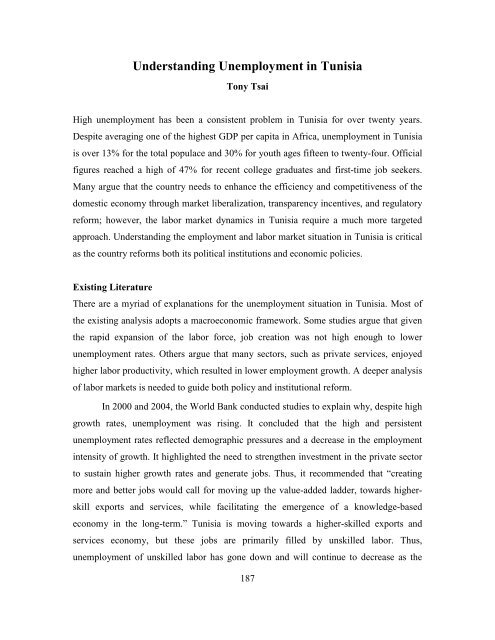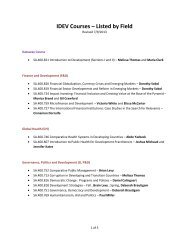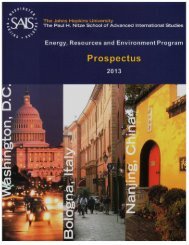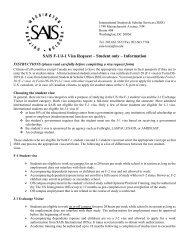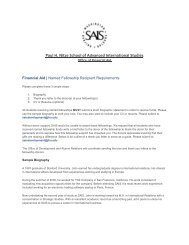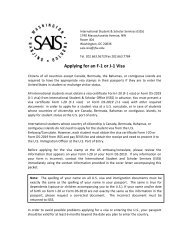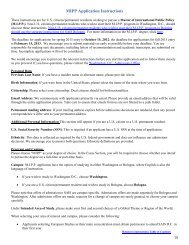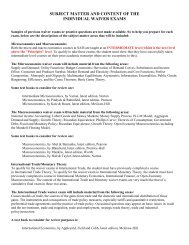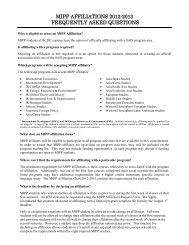Tunisia: Understanding Conflict 2012 - Johns Hopkins School of ...
Tunisia: Understanding Conflict 2012 - Johns Hopkins School of ...
Tunisia: Understanding Conflict 2012 - Johns Hopkins School of ...
You also want an ePaper? Increase the reach of your titles
YUMPU automatically turns print PDFs into web optimized ePapers that Google loves.
<strong>Understanding</strong> Unemployment in <strong>Tunisia</strong><br />
Tony Tsai<br />
High unemployment has been a consistent problem in <strong>Tunisia</strong> for over twenty years.<br />
Despite averaging one <strong>of</strong> the highest GDP per capita in Africa, unemployment in <strong>Tunisia</strong><br />
is over 13% for the total populace and 30% for youth ages fifteen to twenty-four. Official<br />
figures reached a high <strong>of</strong> 47% for recent college graduates and first-time job seekers.<br />
Many argue that the country needs to enhance the efficiency and competitiveness <strong>of</strong> the<br />
domestic economy through market liberalization, transparency incentives, and regulatory<br />
reform; however, the labor market dynamics in <strong>Tunisia</strong> require a much more targeted<br />
approach. <strong>Understanding</strong> the employment and labor market situation in <strong>Tunisia</strong> is critical<br />
as the country reforms both its political institutions and economic policies.<br />
Existing Literature<br />
There are a myriad <strong>of</strong> explanations for the unemployment situation in <strong>Tunisia</strong>. Most <strong>of</strong><br />
the existing analysis adopts a macroeconomic framework. Some studies argue that given<br />
the rapid expansion <strong>of</strong> the labor force, job creation was not high enough to lower<br />
unemployment rates. Others argue that many sectors, such as private services, enjoyed<br />
higher labor productivity, which resulted in lower employment growth. A deeper analysis<br />
<strong>of</strong> labor markets is needed to guide both policy and institutional reform.<br />
In 2000 and 2004, the World Bank conducted studies to explain why, despite high<br />
growth rates, unemployment was rising. It concluded that the high and persistent<br />
unemployment rates reflected demographic pressures and a decrease in the employment<br />
intensity <strong>of</strong> growth. It highlighted the need to strengthen investment in the private sector<br />
to sustain higher growth rates and generate jobs. Thus, it recommended that “creating<br />
more and better jobs would call for moving up the value-added ladder, towards higherskill<br />
exports and services, while facilitating the emergence <strong>of</strong> a knowledge-based<br />
economy in the long-term.” <strong>Tunisia</strong> is moving towards a higher-skilled exports and<br />
services economy, but these jobs are primarily filled by unskilled labor. Thus,<br />
unemployment <strong>of</strong> unskilled labor has gone down and will continue to decrease as the<br />
187


